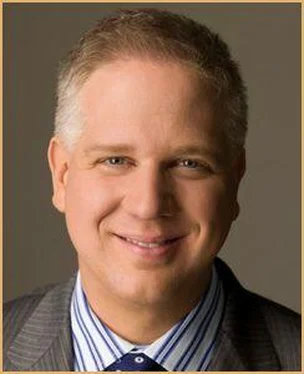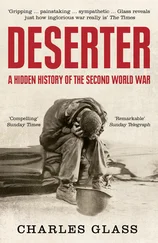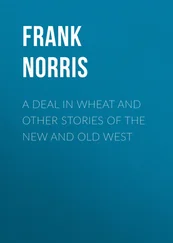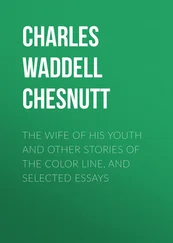A constable placed a hood over Bly’s head, and another over Rose’s. Two traps sprang. A pair of bodies plummeted downward, and the necks of two very young Regulators loudly and sickeningly snapped.
Shays’ Rebellion was over, now as cold and dead as the two young burglars hanging in Lenox.
• • •
Far to the south, upon the fertile banks of Virginia’s Potomac River, George Washington was done with his duties of chairing a convention in Philadelphia. He continued to ponder what other lessons—besides Bly’s dying testament—might be learned from this botched rebellion.
America, he knew, required a federal government strong enough to resist the kind of lawlessness that had erupted in Massachusetts. The new Constitution he had played a vital role in drafting would be necessary to protect both the government and the governed.
He hoped that James Madison, his new friend, who was now on his way to the Virginia Ratification Convention in Richmond, might be able to help him finally achieve this goal. Virginia’s vote would be crucial in deciding whether the new Constitution would succeed or fail. If it failed, Washington feared that the chaos that had briefly bubbled to the surface in Massachusetts would grow into a roaring boil and scorch the entire Union.
3
The Virginia Convention:
Compromising for the Constitution
Richmond, Virginia
State House
Fourteenth and Cary Streets
June 2, 1788
Patrick Henry smelled a rat.
And his nostrils had been twitching for quite some time.
Henry, the popular former governor of Virginia, drummed his fingers on the side of his heavy oak chair as he listened to crusty old judge Edmund Pendleton cough and wheeze. The air was heavy with anticipation as they waited for the Virginia convention, called to ratify the new federal Constitution, to finally begin.
Henry sensed that everything was now hurtling down to the wire. America had won the Revolution, but it seemed that she was losing the peace. The Articles of Confederation had bound the rebellious colonies together for the last seven years, but it had created something more akin to a social club than a nation—and a poorly run club at that.
Under the Articles, the Second Continental Congress had very limited powers, and directly taxing citizens was not one of them. As a result, it could hardly pay the interest on its debts. Hat in hand, Congress was forced to beg individual states for money like a club treasurer harassing deadbeat members for back dues.
Money wasn’t the only issue. An “every state for itself” mentality meant that the country as a whole could barely field an army, but eleven different states boasted their own navies. A violent uprising—“Shays’ Rebellion”—had torn apart western Massachusetts just a year earlier without any national military to quell it. Many people worried that Massachusetts was just the beginning.
With the American experiment now hanging in the balance, many leaders argued that the Articles should be changed to allow for a stronger federal government before it all fell apart. A convention met at Independence Hall in Philadelphia to work out the details, but the delegates had quickly determined that the Articles couldn’t be fixed. They were broken beyond repair. Some delegates, led by Virginia’s James Madison, went rogue and drafted an entirely new document with a new set of rules that established a very different relationship between American citizens and their government.
They called it “the Constitution.”
These delegates, the “Federalists,” believed they had no other choice. Patrick Henry, on the other hand, thought otherwise. The man who had challenged Britain, and, indeed, the entire universe, to give him liberty or death thirteen years earlier believed the greatest crisis currently haunting America was the possible ratification of this new Constitution. He had avoided the convention in Philadelphia where the monstrosity had been born, but now it had come to him in Virginia and he could ignore it no longer.
Henry knew that the next month might very well decide everything. The Constitution had made a lot of progress since Philadelphia. Delaware, Pennsylvania, New Jersey, Georgia, Connecticut, Massachusetts, and Maryland had already ratified the document. South Carolina might do so at any moment. Only a single additional state’s ratification was necessary for the two-thirds majority needed for the Constitution to take effect—a much lower bar than the Articles had been held to; they had required unanimous approval.
The Constitution’s success seemed so near, but in reality, its very survival still hung in the balance. A Union without Virginia would hardly last longer than the Articles of Confederation had endured with Virginia on board.
That left men like Patrick Henry in the lurch. He did not want to see the Union fall apart, but he also believed that this new document was an invitation to tyranny, which he had fought before. In 1765 he’d made a passionate speech to Virginia’s House of Burgesses: “Caesar had his Brutus,” he’d thundered, “Charles the First his Cromwell; and George the Third, may he profit by their example. If this be treason, make the most of it!”
Now, more than twenty years later, he believed the rat he smelled in Philadelphia was pushing them steadily toward monarchy. He was resolved to do everything in his power to stop that march dead in its tracks.
Henry’s fingers drummed even faster now. His eyes narrowed. He could hardly wait for the fun to begin.
Patrick Henry was ready to go in for the kill.
Richmond, Virginia
Theatre Square (“The New Academy”)
Broad Street, between Twelfth and Fourteenth Streets
June 4, 1788
The kill would not be so easy.
Patrick Henry estimated that 80 percent of all Virginians stood opposed to this new Constitution, but he knew that his opponents, the Federalists, had done their homework. They had worked hard to get the right delegates in place, and now it was becoming clear that the final vote in the ratifying convention teetered on a knife’s edge. Only a handful of votes would decide the issue and potentially the fate of the entire nation.
The nearly 170 delegates formed a large crowd, but all around them, and in the gallery high above, partisans from both sides—along with the merely curious—filled the hall to its brim. Though it was only early June, the sheer mass of humanity made the room too hot and stuffy for comfort.
Patrick Henry stood tall and gaunt, six feet high and just 160 pounds, his weight and strength reduced from persistent bouts of malaria, and his posture stooped. Some thought his spare appearance only increased his power. He reminded some of an avenging angel. Less friendly observers thought he resembled “a scarecrow with a wig.”
Henry’s deep blue eyes peered through his spectacles, surveying his fellow delegates. He felt fortunate that the great George Washington, who presided over the convention in Philadelphia that had delivered this constitutional monstrosity, had decided to sit this one out. Henry was a great orator, maybe even the greatest on the continent—even his hated rival Thomas Jefferson reluctantly conceded that. Oratory, however, had its limits when it collided with George Washington’s mighty reputation. That was the thing about Washington , Henry thought: He knew when and where to fight and, perhaps more important, when to duck a battle .
Henry fixed his sight upon his fellow delegates. Not far away sat Virginia’s current governor, Edmund Randolph. If ever there was a reed blowing in the wind, it was the tall, handsome Randolph. In fact, the wind seemed to be optional; oftentimes a slight breeze would do the trick. Randolph, Henry recalled, had traveled to Philadelphia and presented his “Virginia Plan” to junk the Articles in favor of a new Constitution. Then, when the Constitution was drafted, he came out against it because it lacked a “Bill of Rights.”
Читать дальше












